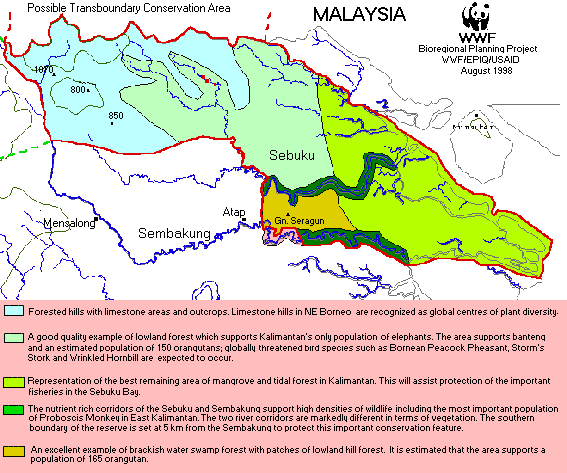
The Sebuku - Sembakung National Park is the most recent
addition to Indonesian's list of National Parks, gazetted in October 1998. The park
comprises an area of 400,000 ha. and is bounded on the west by the Kayan Mentarang
National Park. Together with this park, the Sebuku Sembakung National Park forms an almost
complete representation of bio-geographic regions in Kalimantan, ranging from the mountain
and hill habitats from Kayan Mentarang to the lowland and mangrove forests of Sebuku
Sembakung. 
The western area of the Sebuku watershed comprises forested hills with limestone areas and outcrops. Although limestone areas are recognized as areas with unique biological and cultural values they have been unrepresented in Indonesia's protected area network so far. A current World Bank sponsored project is investigating limestone ecosystems in order to improve management and prevent unsustainable developments in these unique areas.
The central part of the reserve is a good quality example of lowland forest including a flat lowland plain supporting the only known population of Elephants in Kalimantan. Lowland forest is one of the most threatened habitats in Kalimantan both as a result of the 1997-98 forest fires and logging activities. WWF Indonesia hopes that the establishment of the Sebuku Sembakung National Park will compensate for the loss of this biodiversity-rich habitat type in other areas in Kalimantan.
Muara Sebuku, at the easternmost part of the site, is the best and least disturbed mangrove forest in Kalimantan, the only area left in the region without shrimp ponds. The area also comprises about 10,000 ha. of peatswamp forest.
The area is almost completely uninhabited and only accessible for the real adventurers. Nunukan could be your base. If you don't know where to find this, don't go.
There is no accommodation inside the reserve.
WWF, Jl. Katamso 12, Samarinda
Probably:
Possibly: